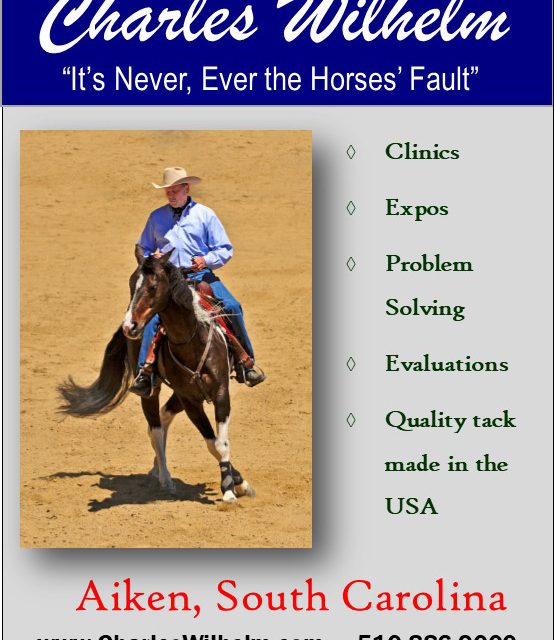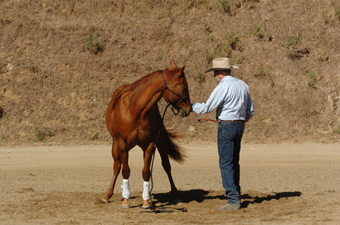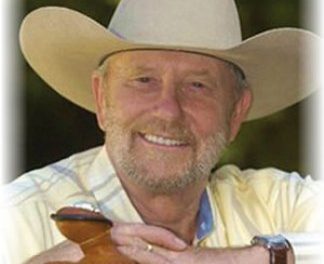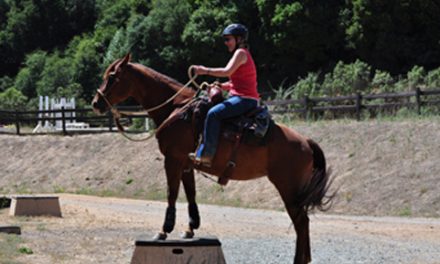 I remember growing up and hearing that we must use light hands and not pull on our horses. However, when we kept our hands light on the reins, we did not necessarily communicate with the horse. So, through lack of education and knowledge we ended up making our horses heavier. When a horse pulls on us, the tendency is to allow the reins to be pulled through our hands. When a horse pulls on the reins, gets release and is not corrected, this actually teaches the horse that pulling is acceptable behavior. Having been successful, the horse will do it again. The result is that the head will get lower and lower and the horse will be more on the forehand.
I remember growing up and hearing that we must use light hands and not pull on our horses. However, when we kept our hands light on the reins, we did not necessarily communicate with the horse. So, through lack of education and knowledge we ended up making our horses heavier. When a horse pulls on us, the tendency is to allow the reins to be pulled through our hands. When a horse pulls on the reins, gets release and is not corrected, this actually teaches the horse that pulling is acceptable behavior. Having been successful, the horse will do it again. The result is that the head will get lower and lower and the horse will be more on the forehand.
A horse is born to resist. When a horse comes from the factory, so to speak, resistance is one of the natural characteristics. Some horses resist more than others. With some horses here at the barn all I have to do is pick up a rein and they instantly give. With others, the bullies and the lethargic horses (as I categorize them), they just lay down on my hands and don’t care how heavy the contact. Over the forty years I have worked with horses, all breeds, disciplines and personalities, I have found that no matter what, we must teach the horse to yield to our hands. If you allow your horse to pull on you, as I said, that is exactly what you are teaching the horse to do. I have some very firm rules about this. A horse cannot pull, lean or brace on my hands. My responsibility is to recognize when the horse yields and immediately release the pressure.
It may be a big change for your horse to go from you riding with light hands to holding firm and requiring a yield to that pressure. Be consistent to help your horse adjust to this change. You always need to be aware of what your horse is doing. Just recently one of my clients was riding her horse and we stopped to chat. As she sat there, the horse took the bit and pulled the reins right out of her hands. She knows that this is not appropriate but she did not correct the horse. I had her take both reins and slowly, firmly anchor her hands on the saddle so that when the horse pulled, the hands were braced and the horse couldn’t move the reins. If you do this without anchoring your hands, the horse will likely pull your hands right off the saddle. When the horse pulls, you just hold until it quits pulling. The horse may throw its head right and left but eventually it will yield and then you release. The key is to release immediately and quickly pick up the rein again.
When you are riding along and the horse is leaning on your hands, don’t be afraid to make contact with the bit, as much as five pounds of pressure on both reins (or one rein if you are working on vertical or lateral flexion), hold and anchor the reins above your knee or the pommel of the saddle. The horse will pull, pull, pull but when there is no release from you, the horse will yield. If the horse pulls harder, you anchor more. If the horse goes from two pounds of pressure to ten pounds, you match the ten pounds. The horse will resist you because this is a big change and the horse will be looking for some type of release. A horse can go in six different directions: up, down, forward, back, left or right. You must be alert for some type of reaction, firm and consistent.
Whether you want the horses’s nose, up down to the right or left, you set the standard. You must let the horse know what you expect. If I am working with a horse that gives at ten pounds of pressure, I will let the horse do that for a time or two, then I work to reduce that response to zero pounds. My expectation is for the horse to yield at the lightest of cues. Learning to yield is a progression and it will take some time and patience. I suggest that you start with the horse standing and then progress to a walk, trot and finally and canter. Your horse’s ability to learn will depending on your timing of the release, it must be immediate when the horse releases. This teaches the horse what you are looking for. Releasing the reins doesn’t mean your throw the reins away but you must give enough release that the horse feels it, and it is an acknowledgment of the horse’s try.
When you hold and release, the horse is learning to accept your hands and yield to the pressure you apply. You won’t have any kind of performance from your horse if your horse is pulling or leaning on your hands. The horse will be on the forehand and will not have fluid motion. This is a process and it is easier to do with a young horse or a horse that has never had a bit in its mouth. Riding a horse that is ten or fifteen years old and is used to taking the bit and pulling reins, feels like I am pulling on one of the 12 x 12 posts that hold up my arena. A horse like this is extremely dull and non responsive. Once you have a horse that will give, you have a horse that is starting to be responsive. Once your horse yields to your hands, the horse can start coming from the rear because the hind end has a place to go. When a horse is resisting, there is no way the hind end can come under.
If your horse is pulling the reins through your hands, you need to work on your part. Don’t allow your horse to pull or lean on your reins. This doesn’t mean you jerk on the horse. If I am working a horse that is really abrasive I make sure I have the slack out and I’ll vibrate the inside rein. I keep vibrating until I get a yield and then I release. To make a difference in a horse that is used to pulling on you, particularly if your feel of the yield and your timing of the release is not quite on the money, may take you some weeks. Here it takes two to three weeks to get a dull horse to start accepting at the walk and trot. The canter takes a little longer because there is bigger movement and faster speed. You must have patience and be consistent.
You must learn to feel the give and respond immediately so the horse associates the yield with the release. Releasing at the wrong time is easy to do and not unusual. Your hands may not react fast enough when your brain says the horse has yielded. Be patient, persevere and set your standards high. Expect a little bit more from your horse and you will have a light, responsive and much more enjoyable horse.
All this also applies to your leg and seat aids. Many people put a leg on a horse and when nothing happens, they press more. Some trainers teach this but I believe this makes a dull horse. I rhythmically bump the calf of my leg until the horse yields laterally, moving away from my leg and then I stop. Soon the horse will move off with a light touch of my leg. So same rule applies, pressure and release. Reward your horse for the try and you will have a light, responsive horse. Don’t settle for less. Horses are wonderful animals and they are a great reflection of us. They are willing to do anything for us as long as we are clear and stay consistent with our communications.
Charles Wilhelm





